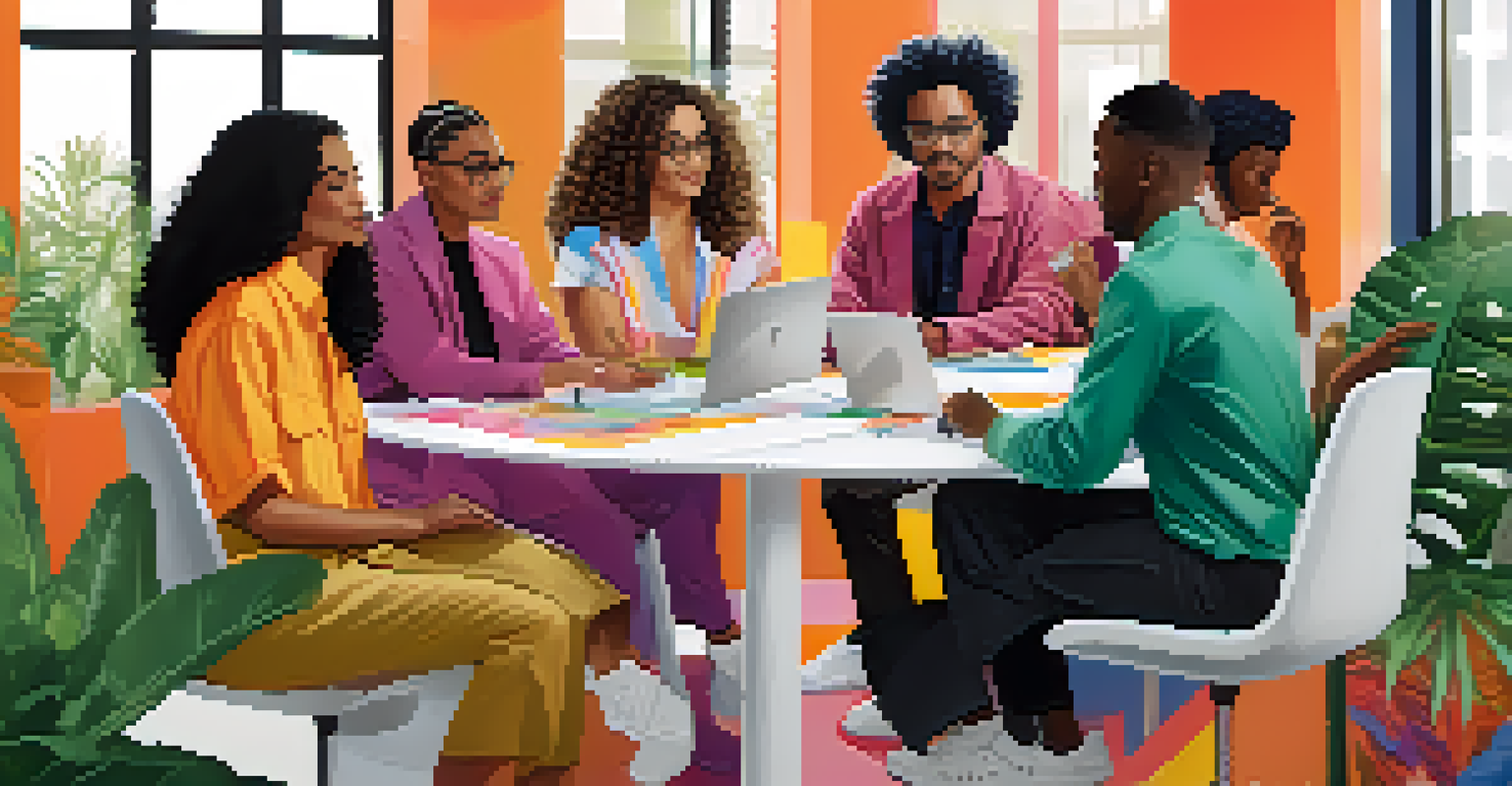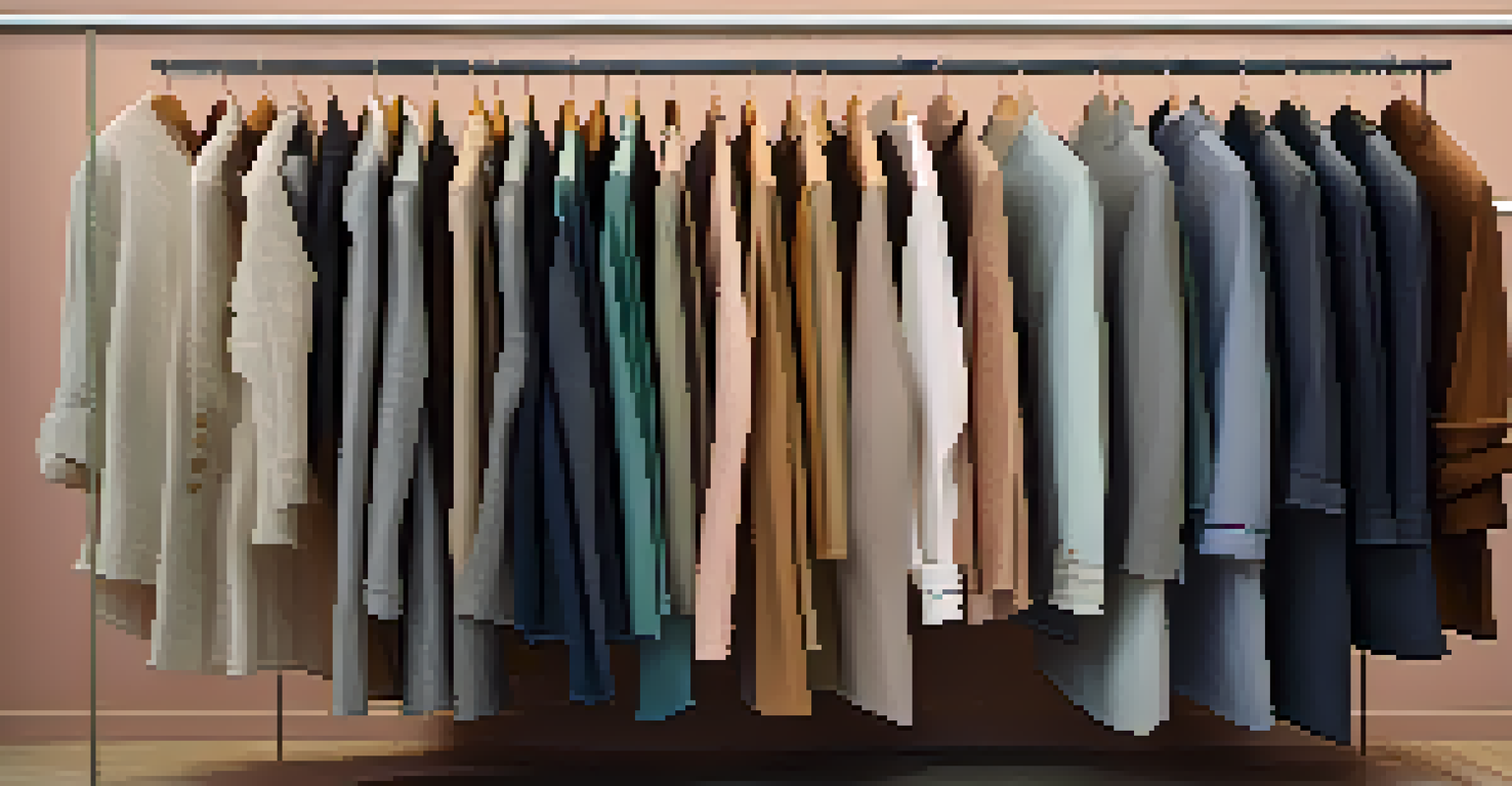Gender Neutrality in Work Attire: A Fashion Evolution

Understanding Gender Neutrality in Fashion
Gender neutrality in fashion refers to clothing that does not conform to traditional gender norms. This concept allows individuals to express their identity without being confined to stereotypical styles. By blurring the lines between what is considered 'masculine' or 'feminine,' we create a more inclusive environment for everyone.
Fashion is the armor to survive the reality of everyday life.
This shift is not just about clothing choices; it’s a cultural movement toward acceptance and diversity. Many brands are embracing this idea, offering designs that appeal to all genders. As a result, consumers now have more options that reflect their personal style, rather than just societal expectations.
Ultimately, gender-neutral fashion promotes freedom of expression. It encourages individuals to choose what makes them feel comfortable and confident, regardless of traditional labels. This evolution is reshaping the way we think about work attire and personal identity.
The Historical Context of Work Attire
Historically, work attire was strictly divided along gender lines. Men typically wore suits, while women donned dresses or skirts, often with restrictive elements. These rigid expectations not only limited personal expression but also created a disconnect between individuals and their professional identities.

As society began to recognize the importance of equality and diversity, the need for change became evident. The late 20th century saw the rise of women in the workforce, demanding more functional and comfortable attire. This shift paved the way for a reevaluation of what professional clothing should look like.
Embracing Gender-Neutral Fashion
Gender-neutral fashion allows individuals to express their identity beyond traditional gender norms.
Today, many workplaces are moving away from these outdated norms. Organizations are now more open to allowing various styles that reflect individual personality and comfort, fostering a more inclusive atmosphere. This change marks a significant step toward embracing diversity in the professional world.
The Rise of Unisex and Androgynous Styles
Unisex and androgynous fashion has gained popularity in recent years, especially in the workplace. These styles often blend elements from both traditional men’s and women’s clothing, creating versatile options for all. Think about a well-tailored blazer that can be worn with tailored trousers or a flowing skirt—this versatility is key.
I think the most important thing is to be true to yourself and your style. Wear what makes you feel good.
Brands like Telfar and Rad Hourani have led the charge in creating fashion lines that prioritize inclusivity. Their collections feature pieces designed to be worn by anyone, regardless of gender. This not only caters to a broader audience but also challenges the fashion industry's long-standing norms.
As more people embrace these styles, we see a shift in what is deemed acceptable in professional settings. This evolution encourages individuals to break away from conventional attire, further promoting gender neutrality in work environments.
The Influence of Pop Culture on Work Fashion
Pop culture has always played a significant role in shaping fashion trends, and the rise of gender-neutral styles is no exception. Celebrities and influencers are increasingly embracing androgynous looks, showcasing that style knows no gender. This visibility helps normalize gender-neutral fashion in everyday life and professional settings.
From musicians like Harry Styles to actors like Janelle Monáe, public figures are redefining what it means to dress for success. Their bold fashion choices inspire others to explore their own style without fear of judgment. This cultural shift is crucial for fostering acceptance in the workplace.
Evolving Workplace Dress Codes
Companies are reexamining dress codes to promote inclusivity and self-expression among employees.
As these trends gain traction, they empower individuals to express themselves authentically. The influences of pop culture not only challenge traditional gender norms but also encourage businesses to rethink their dress codes, making room for more inclusive policies.
Redefining Professional Dress Codes
Many companies are now reexamining their dress codes to be more inclusive and reflective of modern values. This means moving away from strict guidelines that dictate what men and women can wear. Instead, organizations are adopting policies that focus on comfort and self-expression, allowing employees to showcase their individuality.
With the rise of remote work, the concept of professional attire has changed even further. Casual and comfortable clothing is becoming more accepted in virtual meetings, making it easier for individuals to dress in a way that feels authentic to them. This shift is a direct response to the demand for flexibility in the workplace.
By embracing gender-neutral dress codes, companies can create a more welcoming environment. This not only enhances employee morale but also promotes diversity and inclusion, which are essential for a thriving workplace culture.
The Role of Fashion Brands in Promoting Inclusivity
Fashion brands play a crucial role in the evolution of gender-neutral work attire. By designing collections that cater to all genders, they set the tone for what is acceptable in professional fashion. Many companies are now prioritizing inclusivity in their marketing and product offerings, reflecting a broader societal shift.
Brands like ASOS and Zara have introduced gender-neutral collections, demonstrating that fashion can be accessible to everyone. This approach not only appeals to a diverse customer base but also encourages other brands to follow suit. The more options available, the more individuals can find styles that resonate with them.
Pop Culture's Impact on Styles
Influencers and celebrities are normalizing androgynous looks, encouraging acceptance in professional settings.
As these brands continue to push boundaries, they contribute to the normalization of gender-neutral fashion. This evolution not only benefits consumers but also helps create a more equitable industry, promoting the idea that fashion is for everyone, irrespective of gender.
Looking Ahead: The Future of Gender Neutrality in Work Attire
The future of gender neutrality in work attire looks promising, as more individuals and organizations embrace this evolution. With ongoing conversations about identity and inclusivity, we can expect continued momentum in this movement. Fashion is no longer just about aesthetics; it’s about self-expression and authenticity.
As workplaces become more inclusive, we may see a greater variety of styles and garments accepted as professional attire. This shift will likely encourage more people to feel comfortable in their own skin, ultimately leading to a more productive and harmonious work environment. The evolution of work attire is a reflection of our changing society.

Ultimately, the journey toward gender-neutral work fashion is just beginning. As we continue to challenge traditional norms and embrace diversity, we pave the way for future generations to express themselves freely and authentically in their professional lives.